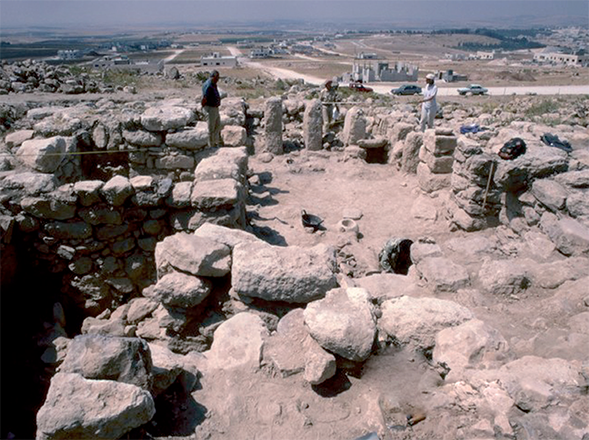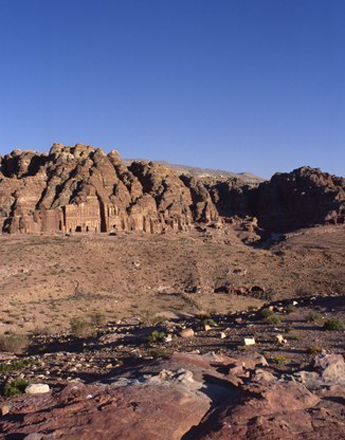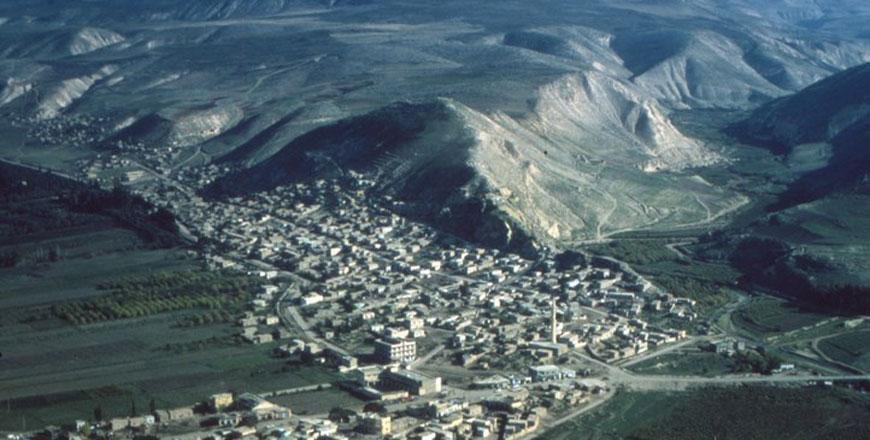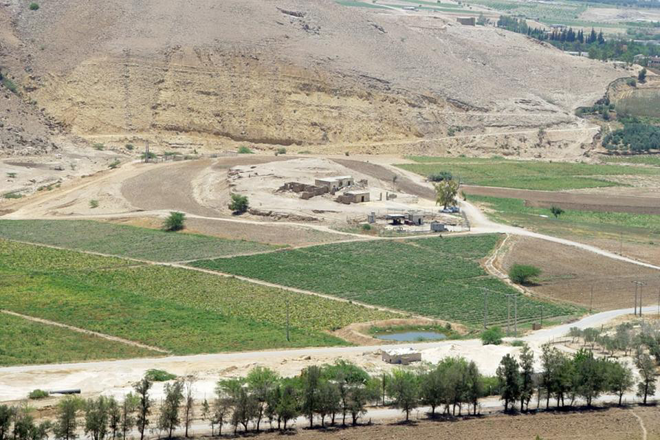You are here
Scholar examines pottery from Iron Age site of Tell Jawa
By Saeb Rawashdeh - Apr 20,2023 - Last updated at Apr 20,2023

Tell Jawa, a fortified Iron Age town on the edge of the Amonite Kingdom 7th or 6th century BC (Photo courtesy of ACOR)
AMMAN — Tell Jawa is a relatively small site located south of Amman, near Yadouda, on the Airport Road.
Tell Jawa was mainly occupied during the Iron Age, and excavation began in 1992, lasting for six seasons, said Andrew Graham from the University of Toronto.
“Black-slipped and burnished pottery was recovered in five domestic and industrial buildings in the central sector at Tell Jawa, while a number of random shards from other fields testify to the presence of pottery on the site,” Graham said, adding that black ware appears in the form of shallow bowls, deep bowls, miniature vessels, thin walled juglets and lamps.
The main bowl type found at Tell Jawa is saucer, and it appears in red/pink slipped and burnished forms, Graham said, noting that three saucers “have a splayed rim with a groove on the upper surface”.
More numerous are the small bowls found at the site, either hemispherical in shape or carinated (shaped like a ridge) with an everted rim. Shallow everted-rim bowls are even more plentiful, and come in both small and medium size vessels, Graham underlined.
The typical double disc base of Ammonite local wares is less common, but appears on occasion, in black-slipped and burnished pottery, Graham elaborated, adding that bases are more common for both shallow and deep bowl forms.
“Tripod mortar bowls made of a porous oxidised fabric with white slip are found in large quantity at Tell Jawa,” Graham noted, adding that a handful of rim shards came from miniature bowls but these too are slipped and highly burnished.
The appearance of black-slipped pottery suggests the introduction of social and cultural influences that affected the entire spectrum of technological behaviours related to the production of these pots, the scholar interpreted, adding that in order to understand such changes, researchers look at constructed models of specialised craft production, which are often cited as prime indicators of complex socio-economic processes.
“Unlike morphological or artistic definitions of ceramic style, concept of ‘technological style’ is based upon a clarification of the suite of practices that constitute technological behaviour [learned techniques, organisation of labour, ritualistic practices, etc.], Graham said.
Implementing detailed analyses, specific “technological behaviours” have been understood as representing dynamic social processes and these processes are not necessarily “organic” in their origin but can also adopted from elsewhere, and it is through this “absorption” that they become mirrors of different cultural, economic and technological models, Graham said.
“The preliminary research presented here is part of a larger effort to understand and contextualise specific practices across the technological landscape of Iron Age central Transjordan. On the basis of surface treatment alone, three discrete bowl types are identifiable in the ceramic assemblage from Tall Jawa, black burnished bowls, red-slipped bowls [both burnished and unburnished], and unslipped or plain wares. Black burnished bowls have traditionally been referred to as an Ammonite ware which appears to be limited to sites located in the region immediately surrounding Amman,” Graham said.
Related Articles
AMMAN — Brigham Young University from Provo initiated Wadi Mataha project in Petra and they tested the theory generated from the previ
AMMAN — Tell Shuneh Shamaliyyeh is located in the northern part of the eastern side of the Jordan Valley in Irbid Governorate. The Jord
Activities of the ancient inhabitants of the Jordan Valley near the site of Tell Himmah (around 2.5 kilometres east of Tell Dayr’Alla) have














